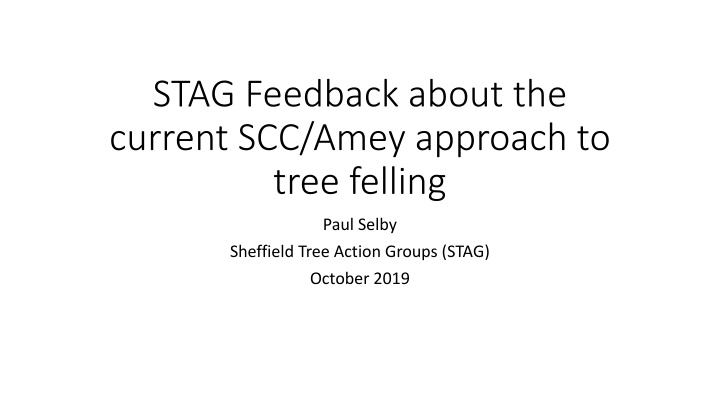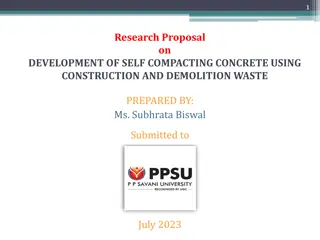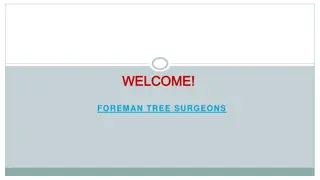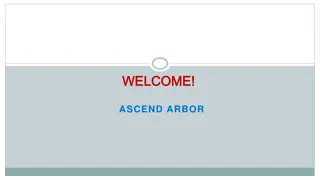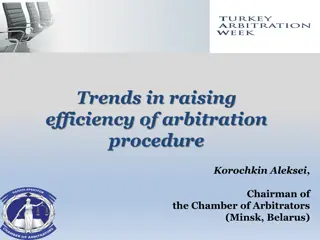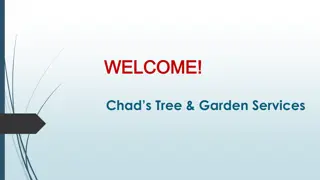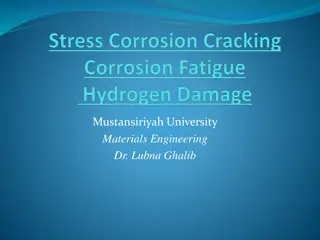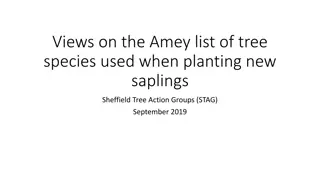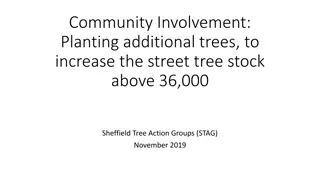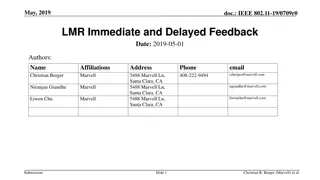Evaluation of SCC/Amey Approach to Tree Felling - STAG Feedback
Sheffield Tree Action Groups (STAG) provided feedback on SCC/Amey's current approach to tree felling, highlighting issues with past decision-making processes and outlining hopes for future collaborative efforts. The background context includes obligations from the PFI contract and concerns about the maintenance of street trees. STAG's assessment of the tree felling decision-making process prior to March 2018 reveals areas of agreement and disagreement with Amey's categorization of trees for removal. The evaluation raises awareness about contentious categories like Discriminatory and Damaging, along with considerations for the future strategy document.
Download Presentation

Please find below an Image/Link to download the presentation.
The content on the website is provided AS IS for your information and personal use only. It may not be sold, licensed, or shared on other websites without obtaining consent from the author.If you encounter any issues during the download, it is possible that the publisher has removed the file from their server.
You are allowed to download the files provided on this website for personal or commercial use, subject to the condition that they are used lawfully. All files are the property of their respective owners.
The content on the website is provided AS IS for your information and personal use only. It may not be sold, licensed, or shared on other websites without obtaining consent from the author.
E N D
Presentation Transcript
STAG Feedback about the current SCC/Amey approach to tree felling Paul Selby Sheffield Tree Action Groups (STAG) October 2019
Contents Starts with the negatives about the past: Background context The pre March 2018 tree felling decision making process Then continues with hope based upon the present: Lessons from the Joint Investigation process Ends with positives about future collaborative working: Key issues that need dealing with in the Strategy document
Background context PFI contract includes the following obligations: To fell 17,500 trees over the 25 years of the contract, with a minimum of 200 a year (SCC have admitted that the intent of felling such large numbers was to even out the age of the tree stock) Missing kerb stones is not allowed (SCC values an unbroken kerb line above street trees) Curving the kerb line by anything greater than 50mm over a 2 metre length of kerb is not allowed (SCC values near perfect straight kerb lines above street trees) Altering the layout of roads (eg to add build outs, or to narrow a road) is not included in the maintenance contract, and comes at an extra cost to SCC The existing strategy documents in the contract include a key aim of reducing the maintenance costs of Sheffield s street trees by the time the contract ends in 2037 (ie by replacing felled large woodland species with smaller, slower growing species)
High level SCC/Amey tree felling decision making process (pre March 2018) Process Step 1 (Amey) As a result of the contract aims and obligations, in its original survey/audit of all Sheffield s 36,000 street trees, Amey identified trees which needed felling for the following reasons: Dead, Diseased, Dying STAG has only rarely had any disagreement with Amey assessments in these categories Dangerous STAG is mostly okay with this category, but it does need to be debated whether the best way to deal with historically pollarded trees is always to fell them, rather than canopy thin or re-pollard Discriminatory (narrow pavement or leaning into carriageway) Context is key with this category, so STAG does not always agree (eg in quiet cul-de-sacs where alternatives to felling are available) Damaging STAG has always disagreed with the majority of trees identified in this category, as the strict straight kerb line (and similar) requirements were what drove this category. Way above what is legally allowed by the Highways Act Subjective judgement about the likelihood of death or decline over the remaining length of the contract, and the 10 or so years after the contract ends, in order to meet the 17,500 contract obligation STAG always suspected this category and fundamentally disagreed with it, but it was denied by SCC. Recent talks have confirmed it was indeed an original category in its own right, but when the controversy came to wide public attention in about 2014/2015, this category was subsumed into the Damaging category to hide it.
High level SCC/Amey tree felling decision making process (pre March 2018) Process Step 2 (SCC) SCC retain ownership of the street tree assets of Sheffield, even if Amey have 25 year custodianship of them, through the contract. As a result, SCC have final say over whether to agree to Amey s felling recommendations, or reject them. However: The contract obligations I set out two slides ago constrain SCC scope to disagree, even if they wanted to. Deviations from contract specifications would cost either SCC or Amey extra money (contract penalties) In reality, SCC don t want to deviate from the contract obligations as they inserted them into the contract in the first place. They want perfect straight unbroken kerb lines, and believe that felling half of Sheffield s street tree stock over 25 years is a good thing In pure monetary and balance sheet terms, none of Sheffield s street trees have an asset value, only an average annual maintenance cost on that basis, the cost benefit decision will always be to fell The PFI contract is a modern self monitoring contract and so only a small % of Amey s work is monitored/measured/reviewed As a consequence of all the above, STAG is not aware of SCC ever having rejected an Amey felling recommendation in the pre-March 2018 period
Hope Lessons learned from the Joint Investigation process Joint Amey/STAG investigations of trees that were identified for felling as a last resort but remain standing, (305 trees), began in January 2019 An SCC/Amey/STAG Review meeting was held in August looking at a sample of the investigated trees, aiming to learn lessons Nearly all the threatened trees that have been investigated so far have resulted in Amey recommending that the trees can now be retained, with SCC agreeing The report is still in draft, before publication on the SCC website. But the draft lessons so far include: Not just assuming that humped cracked pavement by a tree is a root problem instead excavate all the tarmac to usually reveal it is 1 metre of 4 layers of tarmac from 30 years of shoddy repairs Increase the transparency of the evidence and decision making relating to felling recommendations Ensuring that the right people with the right skills and capabilities, working toward a clear outcome, are the ones doing the work around trees Use of thin and modified kerb stones, sometimes quite innovatively, and crafted with specialist skills, can be used to retain trees, keeping within the terms of the contract Curving kerb lines, even within the terms allowed under the unnecessarily strict contract specification allows more space for the trees to grow, reducing future costs to SCC and Amey Future repairs around trees should consider removal of soil/substrate to minimise future damage as trees continue to grow Enlarged tree pits can also help to minimise future damage as trees continue to grow The use of flexible pavement materials can be helpful The Council could retain more trees by considering whether to provide Amey with relief from contract obligations for individual trees, by allowing them to leave kerb stones out, curving kerb lines by greater than is allowed in the contract, and changing road configurations
Key issues that need dealing with in the Tree Strategy document Ensuring the draft lessons learned on the previous slide are formalised in the new strategy Full transparency to the public in relation to all future Amey recommendations to fell (including photographic evidence why), and how and why SCC agreed or disagreed A sufficient time period between a felling decision and the actual felling (except for emergency fellings for safety reasons) to allow community groups such as STAG to scrutinise and ask questions
